Reimagining the workplace: office design blurs boundaries between work and home
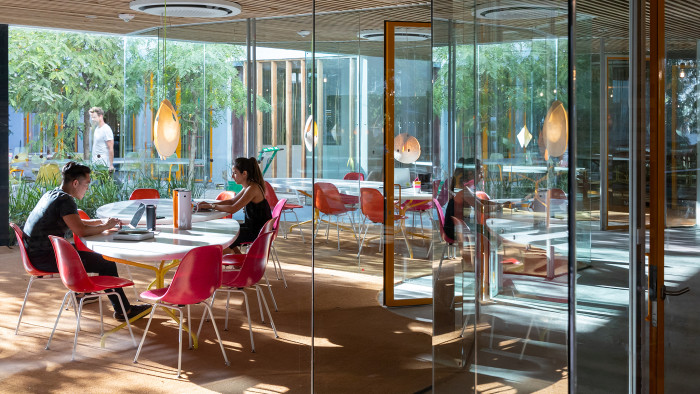
Roula Khalaf, Editor of the FT, selects her favourite stories in this weekly newsletter.
The “creative nomad” class has created demand for a new kind of workspace. Something cool, something surprising, something a million miles from the corporate office with its cubicles and ranks of generic desks and ergonomic chairs, something where like-minded people gather and communicate, and something that feels like a gallery-cum-hip hotel, café and vintage design store.
The essence of that place, you might argue, is embodied in Second Home. We all know about the explosive global growth of WeWork — and the huge questions around its business model — but Second Home is a little different. It eschews the term “co-working space”, instead attempting to provide something more intimate, more clubby, massively more architecturally adventurous and a place that harbours ambitions as a cultural powerhouse.
Its first building opened in an old carpet factory off London’s Brick Lane in 2014 and presented a kind of built manifesto for how different things could be. Designed by Spanish architects SelgasCano, it looked like a set from a 1970s sci-fi film, a retro-vision of a future that never quite arrived. Except, of course, that it just had.
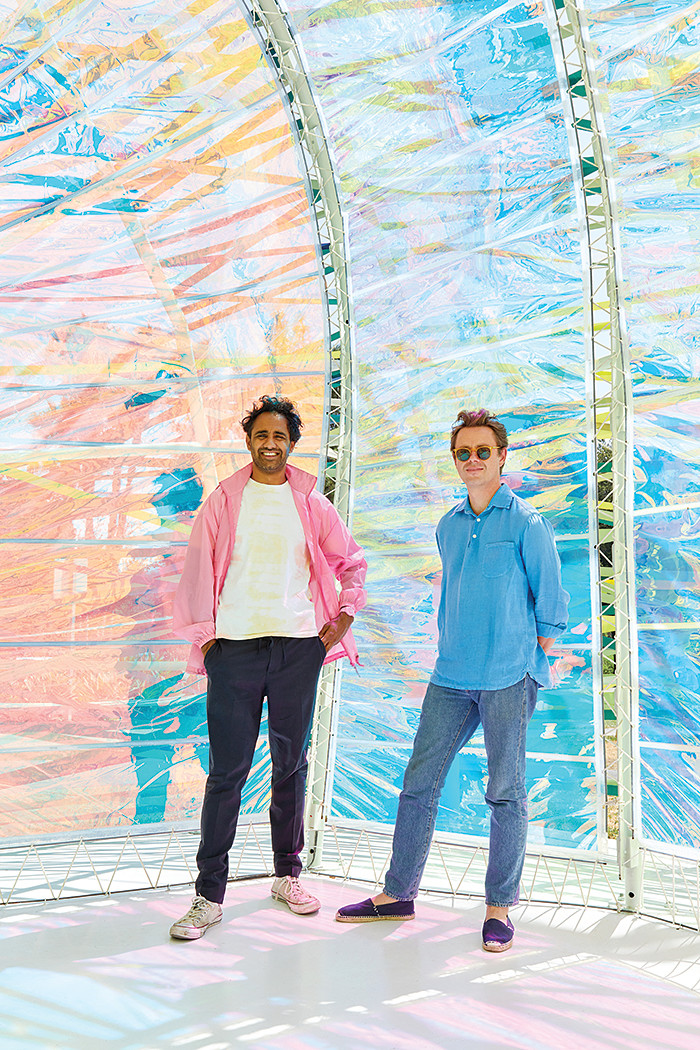
The sight of an orange Perspex bubble swelling out into the street and an interior characterised by amoeboid transparent pods, blobby cutouts and hanging pot plants made entering the building from the graffiti- and curry house-strewn Spitalfields streets a mind-blowing moment. This might have been a design for a space station or an avant garde gallery, but it did not look like an office.
It was an instant smash. But it presented something more than just a wacky design. Integrated among the hanging gardens and the space pods was a programme that embraced mindfulness, yoga, lectures, film screenings and community events that aimed to embed the office in the particular place — in this case, the hotbed of tech, creative and financial innovation at this conjunction of the design and business ends of the city.
Second Home was founded by Rohan Silva, a one-time newspaper columnist and policy adviser to former UK prime minister David Cameron, and Sam Aldenton, an entrepreneur whose previous businesses included entertainment venue Dalston Roof Park and restaurants the Rooftop Café and Feast, all in London.
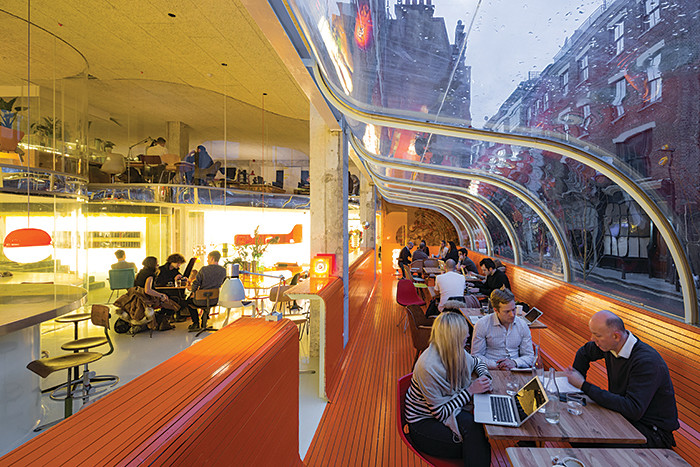
Unlike some other co-working spaces where existing office blocks are quickly tarted up with wallpaper and vintage chairs, architecture is at the heart of Second Home. “A lot of our architecture is about the natural world,” Silva tells me over the phone from Los Angeles, where he is opening a new branch. “How can you embrace that intelligence?” he asks, rhetorically. “How can we get the best natural light? At London Fields [another of the company’s sites in east London] we took the whole front of the building off to open it up and get light in as deep as possible.”
Some offices might have a few pot plants. At Second Home, they become almost jungles. “There are spaces which are all about this biophilia,” Silva says. “Built around the greenery. And then there are the curves. SelgasCano always says there are no straight lines in nature, so there aren’t many here either.”
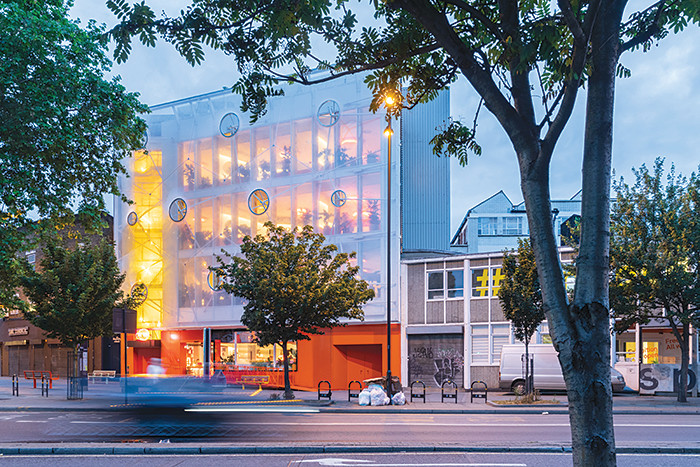
One of Second Home’s most successful tenants has been Bulb, now the UK’s biggest green power supplier. Co-founder Hayden Wood also mentions the plants. “One of the great things about the space at Second Home is that it’s filled with so much greenery,” he says. “Sitting under the big, leafy plants always used to make me feel like David Attenborough in the Amazon rainforest.
“Having all this plant life meant the whole Bulb team could breathe better, cleaner air, and kept us focused on our mission to help people lower their bills and cut their carbon emissions.”
Silva adds: “The other benefit of this architecture, apart from it making everyone feel a bit better, a bit healthier and a bit happier, is that it makes it easier to attract people. People want to come and work here.”
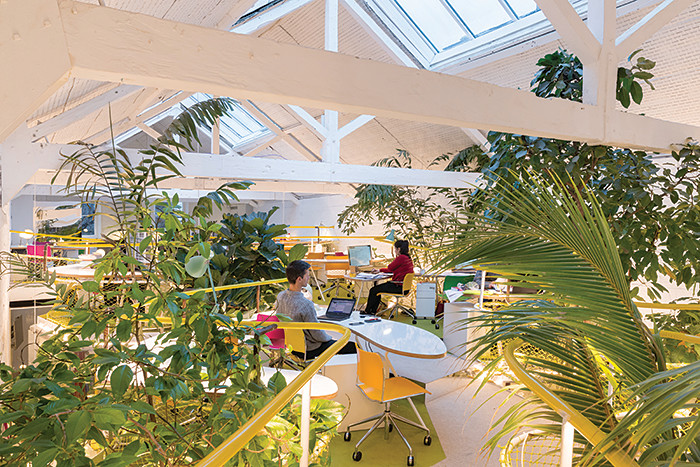
The name of the business acknowledges the blurring of the boundary between work and home, the inevitable leeching of one into the other. If we finally accept that, then why shouldn’t the office be a place we might want to stay? The architecture is undoubtedly seductive, bright, light and curvaceous — albeit determinedly garish — but what goes on in those spaces is as important as how they work and how they look.
“If you’re a bit happier and a bit healthier,” says Silva, “you’re probably going to be a bit more creative. So we have a wellness programme with yoga, meditation and running.”
The London Fields building also has something surprising on the roof: young children playing. The crèche seems like something other companies might latch on to. “We’d wanted to take someone on,” Silva says, “but we lost her because she went somewhere with childcare, which set us thinking.” It was difficult to set up, he admits, with reams of extra building regulations, but it provides an invaluable resource and a boost in quality of life for parents who don’t have to rush home for nursery pick-ups.
Silva’s original vision of babies in meetings and children running round the office might have proved more difficult to realise than he had anticipated, but it seems to work. Daniel Roper, general manager, says: “We also have a live music showcase here, open to local bands, and language labs where Second Home members volunteer time to teach migrants English — which brings the most fascinating mix of people in.”
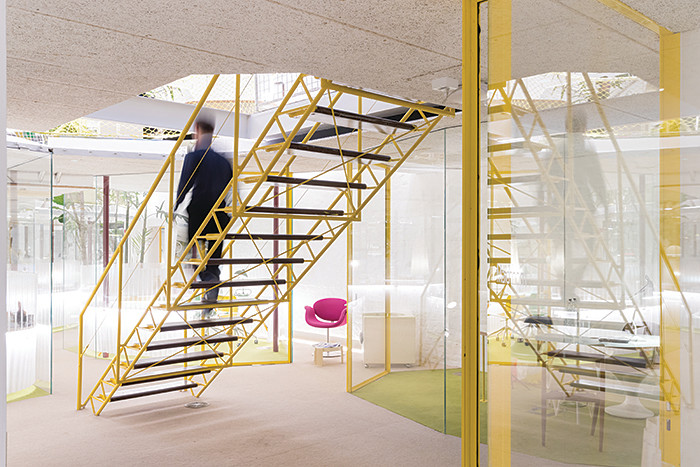
The education angle is adopted overseas too. The company funded and built a remarkable-looking school in the informal settlements of Kibera in the Kenyan capital Nairobi. Its faith in architecture to change lives clearly runs deep.
The Los Angeles Second Home is its most extreme architectural adventure yet. A constellation of yellow-roofed pods looking like lily pads in a sea of lush, tropical vegetation, its appearance belies its site between car parks and the Hollywood freeway. Billed as “LA’s densest urban forest”, 6,500 trees and plants soak up the carbon and give shade to the gardens.
There were cost overruns and it proved a complex project. ‘Life’s easier if you’re just building grey boxes’ Silva said ‘but what we’re trying to do is democratise the environment that Facebook and Google can supply, using architects to experiment and level the playing field.’
There was a time in the early 20th century and perhaps another in mid-century when offices were among the most radical experiments in architecture, total environments for new ways of working, new systems of thinking. Those moments of inspiration and innovation seem a long way away — until you see the LA pictures. It is something entirely new and striking architecturally, and spatially original. Perhaps because these are offices, they haven’t created the waves they might have if they were galleries or theatres. A Lisbon branch opened in a 19th-century market hall on the city’s waterfront. It has so many plants that, from certain angles, it looks like some kind of great agricultural shed lost in the centre of the city.
The Holland Park building in west London is more modest but has a place in popular culture. It was a location for Michelangelo Antonioni’s Blow-Up, the 1966 film that cemented London’s swinging reputation while introducing a hint of darkness and conspiracy. Later it became the office where architect Richard Rogers launched his practice.
More intimate but just as striking as the other sites, this former workshop mews building now has trees growing through its interior, yellow stairs (a nod to Rogers) and a café with an inflatable roof that fills with bubbly foam throughout the day to create a low-level artificial cloud system, which is weirdly hypnotic. It can also seem a little self-parodic, a sense of absurdity that is, perhaps, either the epitome of self-conscious hipster chic or gently self-mocking.
When I try to provoke Silva with questions about how such eccentric architecture might not always be a good thing, I don’t get much of a response. He admits with a sheepish grin that there were some issues with the carefully curated vintage chairs. The architects sourced each one from markets and dealers, and they weren’t always the most ergonomic examples (some tenants complained of bad backs after a few weeks, I am told later). Yet even that drawback is countered by a suggestion that perhaps it is good to get up and walk around if you have been sitting down too long. It can, I have heard, be a bit chilly sitting next to some of the expanses of glass, and those transparent pods don’t always make for easy private conversations.
Bulb’s founder Wood, whose company outgrew Second Home and has now moved to bigger premises, says Second Home was the “perfect place to begin building Bulb, quirks and all”. He adds: “At its heart, Second Home is a community of innovators. We benefited from the shared knowledge, advice and connections of that community.”
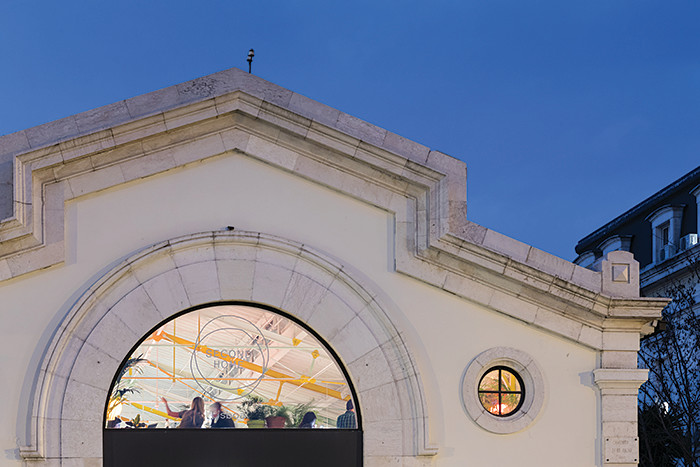
Silva suggests Second Home’s expansion is slowing, although he is just about to open another space in Clerkenwell, east central London. “It was a bit scarring,” he says of trying to build the London properties. “It’s so difficult to build in a city where we’re constantly being asked to show precedents. How can we? This is something so different. Who else takes the front off a building and does a [German engineer and architect] Frei Otto-inspired bubble front?”
The cultural offerings continue, however. “The talks and events cover everything from quantum physics to cooking,” Silva explains, “and they are all open to the public. Diversity makes culture stronger.”
Across the street from the Spitalfields Second Home is Libreria, a small but well-stocked bookshop, its walls mirrored and endlessly reflecting. This, too, is part of the Second Home empire, its books arranged by theme rather than author, always fascinating and always active with talks, signings and conversations. The offices have little library corners, stocked with titles intended to inspire, provoke and stimulate. “We ban mobile phones in the bookshops,” Silva says. “You can get anything on the internet, but it’s rubbish for serendipity. We hope you might find something you were never looking for.”
That serendipity, intellectual and interpersonal, sums up the whole Second Home idea. Things are placed carefully around and, occasionally people bump into each other. It is the bumps, the unexpected and occasionally fortuitous collisions that make this such a place of surprises and potential. The mistake would be to think that any of this really is unintentional.
Comments